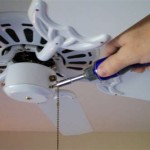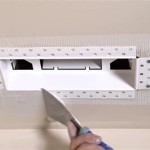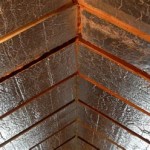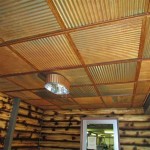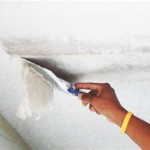Can You Paint Ceiling Fan Blades Black, White, Brown, or Other Colors?
Painting ceiling fan blades can dramatically refresh a room's aesthetic, offering a cost-effective alternative to replacing the entire fixture. Whether aiming for a classic black and white look, a warm brown tone, or a more vibrant color, understanding the process and appropriate materials is crucial for achieving a professional-looking result.
Preparing the Fan Blades for Painting
Proper preparation is the cornerstone of any successful painting project. Begin by turning off the power supply to the ceiling fan at the breaker box. This critical safety step prevents accidental electrocution. Next, protect the flooring and surrounding furniture with drop cloths. Removing the fan blades simplifies the painting process and allows for more thorough coverage. Label each blade and its corresponding location on the fan motor housing to ensure correct reassembly. Clean the blades thoroughly with a degreasing cleaner to remove dust, grime, and any built-up oils that can hinder paint adhesion. Lightly sanding the blades with fine-grit sandpaper creates a slightly roughened surface, promoting better paint bonding.
Choosing the Right Paint for Ceiling Fan Blades
Selecting the correct paint type is essential for durability and a smooth finish. Acrylic-based paints or paints specifically designed for metal or wood, depending on the blade material, are recommended. For consistent color and coverage, opt for a semi-gloss or satin finish. These finishes are easier to clean and less likely to show imperfections than a flat or matte finish. If working with darker colors like black or brown, consider using a primer beforehand to enhance color saturation and minimize the need for multiple coats. Primer also helps to seal the surface and improve paint adhesion.
Painting Techniques for a Professional Finish
Several techniques can be employed to achieve a professional-looking finish. A spray paint application provides an even coat and minimizes brush strokes. A high-quality spray paint designed for the blade material (wood or metal) is recommended. If using a brush, choose a high-quality brush with synthetic bristles to minimize streaking. Apply thin, even coats, allowing each coat to dry completely before applying the next. For intricate blade designs, a smaller artist's brush may be necessary for detail work. Whether spraying or brushing, ensure proper ventilation by opening windows and using a respirator or mask.
Color Considerations: Black, White, Brown, and Beyond
Black and white remain popular choices for ceiling fan blades, offering classic contrast and versatility. Black blades can add a touch of modern elegance, while white blades create a bright and airy feel. Brown blades can introduce warmth and a natural element to a space, complementing wood furniture and rustic décor. Beyond these classic choices, a wide range of colors can be used to create a unique statement. Consider the room’s overall color scheme and choose a color that complements or contrasts with the existing décor. Lighter colors can make a room feel more spacious, while darker colors can create a sense of intimacy.
Addressing Common Painting Challenges
Drips and uneven coverage are common challenges when painting ceiling fan blades. Thin coats and patience are key to avoiding drips. If drips do occur, address them immediately with a damp cloth or a fine-grit sandpaper once the paint has dried. Uneven coverage can often be remedied with additional thin coats. Another common challenge is paint not adhering properly. This is often due to inadequate cleaning or surface preparation. Ensure the blades are thoroughly cleaned and lightly sanded before painting to promote proper adhesion. If working with particularly slick or glossy blades, using a bonding primer can significantly improve paint adhesion.
Reassembling the Ceiling Fan
Once the paint is fully cured, carefully reassemble the fan blades, ensuring each blade is securely attached to the motor housing. Double-check that the blades are oriented correctly, referring to the labels made during disassembly. After reassembly, restore power to the ceiling fan and test its operation to ensure balance and stability. If the fan wobbles, it may be due to uneven paint application or improper blade alignment. Slight adjustments to the blade alignment or sanding down thicker paint areas can often resolve this.
Maintaining Painted Ceiling Fan Blades
Regular cleaning will help maintain the appearance of painted ceiling fan blades. Dust the blades regularly with a soft cloth or a duster. For more thorough cleaning, use a damp cloth and a mild cleaning solution. Avoid abrasive cleaners or scouring pads, as these can damage the paint finish. Regularly inspect the blades for any chips or scratches. Touch up these areas promptly with matching paint to prevent further damage and maintain a pristine appearance.

Update A Ceiling Fan Using Spray Paint

Can Ceiling Fan Blades Be Stained Or Painted Life Should Cost Less

How To Paint Ceiling Fan Blades Sunshine And Rainy Days

How To Paint Ceiling Fan Blades Sunshine And Rainy Days

How To Paint A Ceiling Fan True Value

Ceiling Fan Makeover An Easy Diy Tutorial

Ceiling Fan Makeover An Easy Diy Tutorial

How To Spray Paint A Ceiling Fan Hunter Bennett 52 Inspired Diy

Paint Ceiling Fan Blades With Chalkboard

Ceiling Fan Makeover An Easy Diy Tutorial
Related Posts


